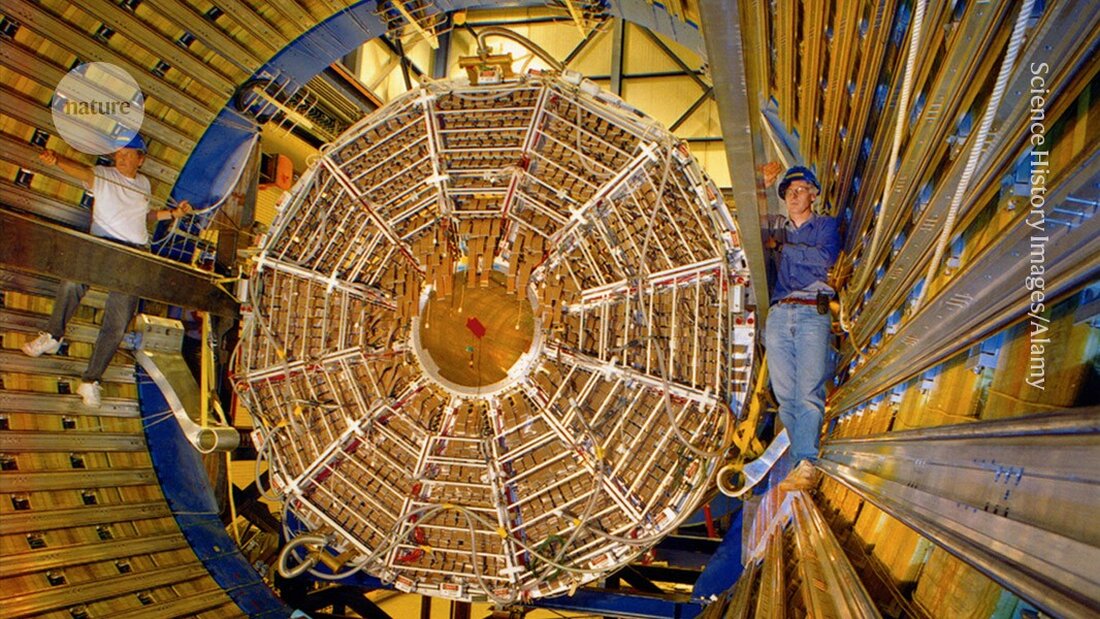Shattered atomic nuclei: revealing their mysterious shapes
Physicists are using high-energy collisions to study the shapes of atomic nuclei, which could revolutionize the understanding of chemical processes.

Shattered atomic nuclei: revealing their mysterious shapes
Physicists have discovered a new way to study the shape of atomic nuclei - by destroying them in high-energy collisions. This method could help scientists better understand the shapes of nuclei, which influences, for example, the rate of formation of elements in stars and helps determine which materials are best suited as nuclear fuel.
“The shape of nuclei influences almost all aspects of the atomic nucleus and nuclear processes,” says Jie Meng, a nuclear physicist at Peking University in Beijing. The new imaging method, published November 6 in the journal Nature, represents "an important and exciting advance," said Meng.
A team at the Relativistic Heavy Ion Collider (RHIC) at Brookhaven National Laboratory in Upton, New York, collided two beams of uranium-238—and later two beams of gold—at extreme energies. They collided "so violently that we basically melted the nuclei into a soup," says co-author Jiangyong Jia, a physicist at Stony Brook University in New York.
The hot plasma created by the collisions expanded very rapidly under pressure, and this was linked to the initial shape of the nuclei. Using a detector called the Solenoidal Tracker at RHIC, or STAR, that detected the momentum of several thousand particles produced by both types of collisions and matched the results with models, the team was able to "turn back the clock to infer the shape of the nuclei," Jia explains.
Hidden figures
An atomic nucleus consists of protons and neutrons, which occupy energy levels like electrons. In general, the particles take on a shape that minimizes the energy of the system. Similar to a drop of water, the core can take on various shapes, including that of a pear, American football, or peanut shell. The shape of a nucleus is “very difficult to predict theoretically,” says Jia. She can too over time due to quantum fluctuations vary.
Previous experiments to explore the shape involved deflecting low-energy ions away from the nuclei. This method - called Coulomb excitation - excites the nuclei, and the radiation they emit as they fall back to their ground state reveals aspects of their shape. Because the time scale is relatively long, this type of imaging can only display a long-term image that shows the average of all shape fluctuations.
In contrast, the high-energy collision method provides an instantaneous image of the nuclei during impact. It's a more direct method, making it more suitable for studying exotic shapes, says Jia.
The technique confirmed that gold had a nearly spherical shape that was consistent from one image to the next. In contrast, the uranium shape changed in the snapshots as the nuclei collided in different orientations. This allowed researchers to calculate the relative lengths of the uranium nucleus in three dimensions, suggesting that uranium is not only stretched but also slightly compressed in one dimension, similar to a deflated American football.
"It's fascinating that it worked" and that other nuclear processes did not affect the emission of the particles and mask the deformation, says Magdalena Zielińska, a nuclear physicist at the French Agency for Alternative Energies and Atomic Energy near Paris.
Hard or soft?
This type of imaging could help tackle the challenging task of distinguishing between nuclei that are 'rigid', meaning they have well-defined shapes, and 'soft' ones, which fluctuate, says Zielińska.
Jia says his team also wants to use the method to study the differences between light ions like oxygen and neon. Oxygen nuclei are nearly spherical, while neon nuclei - which carry an additional two protons and two neutrons - are considered to be bent out. Comparing their shapes would allow researchers to understand how protons and neutrons form clusters in the nuclei, Jia said.
Information about shape can also reveal whether nuclei are likely to interact with each other or undergo a nuclear fission reaction, and can increase the likelihood of a process called neutrino-less double β-decay to discover what might help solve some long-standing mysteries in physics. About 99.9% of visible matter is at the center of atoms, says Jia. “Understanding the nuclear building block is virtually at the heart of understanding who we are.”
-
STAR Collaboration Nature https://doi.org/10.1038/s41586-024-08097-2 (2024).

 Suche
Suche
 Mein Konto
Mein Konto
